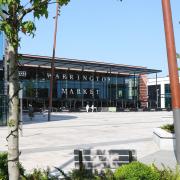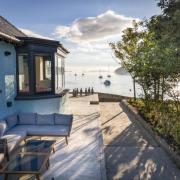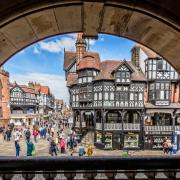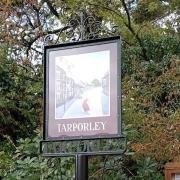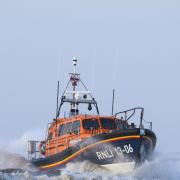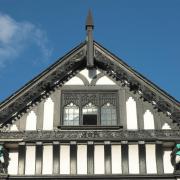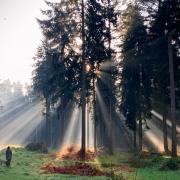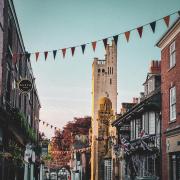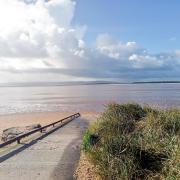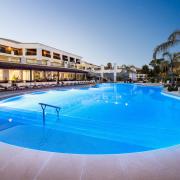The lighthouses of the Dee and Mersey estuaries feature in a new collection of illustrations that pays homage to these architectural gems.
‘Between North Wales, Wirral and Liverpool estuary, you have a huge variety of styles of lighthouse and each one has a story,’ says artist Roger O’Reilly
He's a man who knows a bit about the landmarks that dot our coastlines: 'I grew up near the mouth of the River Boyne, on Ireland’s east coast. A few minutes from my door were three unusual estuarine lighthouses perched among the sand dunes: Drogheda North, East and West,’ he says.
In 2017 Roger began illustrating the lighthouses around Ireland’s south coast. This quickly grew into a collection that culminated in his best-selling book, Lighthouses of Ireland.
Then, while on holiday in Cornwall, he resolved to do the same for England, Scotland and Wales.

It’s a quest that brought him to Chester. He chose the city as his base for day trips as he headed out to see the beacons in the Dee and Mersey estuaries. His sketchbook was filled with studies of each site.
‘My 14-year-old son and I did a tour of Wales, through to Wirral and into Halton,’ he says. ‘We did it over 10 days, staying in Chester and travelling around the areas. I would research the history of each lighthouse and we’d go and have a look.
‘We were so very impressed. A lot of them were run by Mersey Docks and Harbour Board, whereas most around the country were the responsibility of Trinity House (the Corporation of Trinity House of Deptford Strond is the official authority for lighthouses in England, Wales, the Channel Islands and Gibraltar).
‘You can imagine ships gliding in past Talacre, Hoylake, Leasowe, New Brighton, with the lighthouses guiding the sailors in. These days, they have become surplus to requirements and that is one of the reasons why I'm so interested in them – they are part of our maritime heritage. A lot of ship captains will tell you that even now, with all the technology they have at their disposal, the old lighthouses give them a real sort of sense of where they are; they use them as a guide, even though they all have GPS these days.’

Inspired by the travel posters of the 1930s and '40s, each piece of artwork in the portfolio is based on drawings, lovingly created by Roger after his journeys around the British Isles. Some of the lighthouses are private houses, others you can stay in, many are disused, but they all play a part in maritime history. Roger hopes his pictures of English Welsh and Scottish, which are available to buy from his website and will be the subject of a book of prints and stories next year, will keep their stories shining bright.
‘I have more than 300 illustrations and I can only include 100 in the book,' he says. The hardest part will be deciding which to use; it’s going to be like choosing between my children.’
lighthouseeditions.com
Around the houses
Roger O' Reilly based himself in Chester for his tour of these magnificent seven landmarks

Hoylake
‘Hoylake is magnificent. It’s a lovely, lovely lighthouse. It’s a private house now, so I’m sure the people who live there are driven nuts by enthusiasts like me, trying to look over their wall.'
The octagonal brick lighthouse was completed in 1866, replacing its predecessor, which had been operating for more than 100 years by that point. It only shone for 20 years and was decommissioned in 1886. There was, originally, a lower lighthouse too, now demolished, and a more modern tower built at Red Rocks, overlooking what is now Royal Liverpool Golf Course, but that is also now part of a private house.

Leasowe
Leasowe’s lighthouse was constructed in 1763 by the Mersey Docks and Harbour Company to guide shipping safely through the rocky channel into the port of Liverpool and is the oldest brick-built lighthouse in the country. The sand banks shifted so much that the narrow channel was barely navigable and the lighthouse was shut down in 1908. Its last keeper was Mrs Mary Elizabeth Williams, believed to be the female lighthouse keeper of the period.
‘It feels like a world away from anywhere – such a wild part of the country – and yet it’s so close to the city. ‘Absolutely beautiful. A real hidden gem.’

Bidston
‘Bidston is an unusual one, in that it’s actually the furthest from the sea of any lighthouse – three kilometres. It’s up on a hill, so it could afford to be a good distance away. It stands beside the observatory and again, is now a private house, so there’s limited access. Lots of joggers go up there, but I have to admit I walked very slowly as it’s a steep old climb.’
The present tower at Bidston was built by the Mersey Docks and Harbour Board in 1873 as Liverpool’s principal lighthouse. It was in the perfect spot, thanks to its position, and was used until 1913.
‘Like a lot of lighthouses, it had become surplus to requirements. ‘We now need to know to figure out how we're going to preserve them and making homes of them seems a great way to do that.’

New Brighton
‘Perch Rock in New Brighton is one of the few to still have lights but only on the landward side, and for decorative purposes. It's owned by a family and there are plans for it to be renovated and opened to the public. It's a lovely landmark.’
Perch Rock was named after the timber tripod supporting a lantern that was erected in 1683 as a crude beacon to enable shipping to pass the rock safely. Construction of the present tower began in 1827 by Tomkinson & Company, using blocks of interlocking Anglesey granite. It was first lit in 1830 and displayed two white flashes followed by a red flash every minute, and was in continuous use until 1973.

Hale Head
The most southerly point in old Lancashire, Hale Head was built to guide ships into the upper Mersey, with the 1838 structure replaced in 1906 with a taller 45-foot tower with a fixed white light, and a fog bell that sounded in times of poor visibility. It was struck by enemy bombing during the Second World War and decommissioned in 1958. 'It is hidden away in such a quiet spot, you would hardly know it was there.'

Whitby Lighthouse
‘I'd never seen anything like Whitby Lighthouse before,’ says Roger. ‘It's a small one and it would have led to the ships into the Ellesmere Canal.' The lighthouse was built at Whitby Docks in 1880. The plan was to carry boats between the River Mersey and River Severn, creating a link with the Port of Liverpool. The Ellesmere Canal was never completed and parts of it formed the Shropshire Union Canal.
When the Manchester Ship Canal opened and reached Ellesmere Port, a new entrance at Eastham Locks that the lighthouse was no longer needed, and it was decommissioned in 1894.

Talacre
The Grade II listed Point of Ayr Lighthouse, also known as the Talacre Lighthouse, was built in 1776 to guide ships entering between the Dee and the Mersey Estuary. It was replaced by a pile light, decommissioned in 1844, and is now privately owned.
’We had a lot of fun up at Talacre. The whole trip was great fun, actually, seeing all seven lighthouses. Then we saw the rest of the Welsh lighthouses as well, but there was something really special about that bit of the trip, and our time staying in Chester.'





